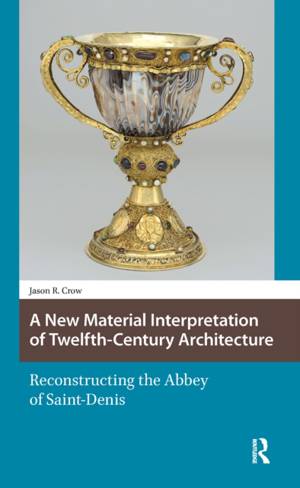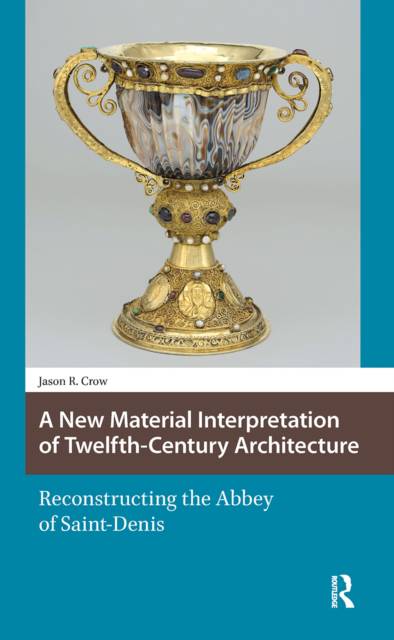
- Afhalen na 1 uur in een winkel met voorraad
- Gratis thuislevering in België vanaf € 30
- Ruim aanbod met 7 miljoen producten
- Afhalen na 1 uur in een winkel met voorraad
- Gratis thuislevering in België vanaf € 30
- Ruim aanbod met 7 miljoen producten
A New Material Interpretation of Twelfth-Century Architecture
Reconstructing the Abbey of Saint-Denis
Jason Crow
€ 188,95
+ 377 punten
Omschrijving
Today, we perceive Gothic cathedrals as light-filled forms representing the sacred. The colored light projected from brightly-colored stained glass windows onto the walls and floors of these buildings suggests the presence of divinity. Suger (1081-1151CE), the abbot of the monastery of Saint-Denis, is credited with originating Gothic architecture. However, focus on form and structure has elided attention to the material out of which medieval churches were made. When Suger describes the early church he was replacing, he says that the gold and gems it contained beamed outwardly with a gleaming light that filled the eye. When he restored his church and filled it with the shining souls of his ecclesia, he repeated God's divine act of creation. His restored church imitated the precious stones that could be shaped and polished to reveal divine light. By crafting stone, Suger fulfilled the divine plan to make heaven on earth.
Specificaties
Betrokkenen
- Auteur(s):
- Uitgeverij:
Inhoud
- Aantal bladzijden:
- 224
- Taal:
- Engels
- Reeks:
Eigenschappen
- Productcode (EAN):
- 9789462982260
- Verschijningsdatum:
- 17/06/2024
- Uitvoering:
- Hardcover
- Formaat:
- Genaaid
- Afmetingen:
- 163 mm x 236 mm
- Gewicht:
- 517 g

Alleen bij Standaard Boekhandel
+ 377 punten op je klantenkaart van Standaard Boekhandel
Beoordelingen
We publiceren alleen reviews die voldoen aan de voorwaarden voor reviews. Bekijk onze voorwaarden voor reviews.










